The African Elephant usually lives in small family groups of between 10 and 20. Its society is matriarchal and herds are dominated by old females. An adult's average daily food intake is about 250 kg of grass, leaves, bark and other vegetation. An elephant's lifespan is about 60 to 70 years, though some individuals may reach 100 or more.
|
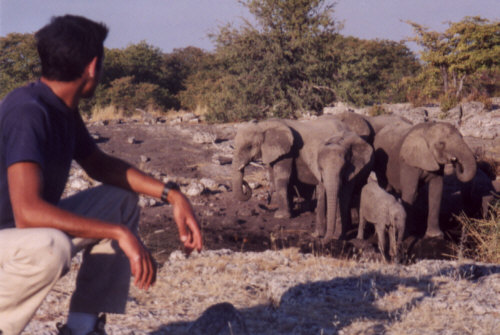
|
|
The black-backed jackal relies heavily on scavenging but is also an efficient hunter, taking insects, birds, rodents and even the occasional small antelope. It also frequents human settlements and takes domestic stock.
|

|
|
Southern Africa is home to a vast array of colourful exotic birdlife, such as this one.
|
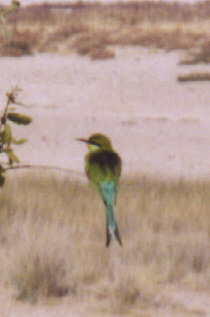
|
|
Let's not disturb the sleeping bat.
|

|
|
The springbok is one of the fastest antelopes (reaching speeds of up to 88 km/hr) and has a distinctive arched-backed bounding gait called 'pronking', which is commonly displayed when it sees predators (or the occasional pair of cyclists). It is extremely common in arid areas usually in herds of up to 100.
|
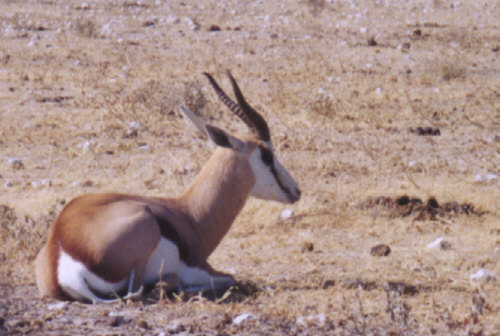
|
|
The lion spends much of the night hunting, patrolling territories and playing (and, as you can see, much of the day sleeping). It lives in prides of up to 30, the core comprising of 12 related females, which remain in the pride for life. The lion is strictly territorial, defending ranges of between 50 to 400 sq km. Lions hunt virtually anything (!), but wildebeest, zebra and buffalo are the mainstay of their diet.
|
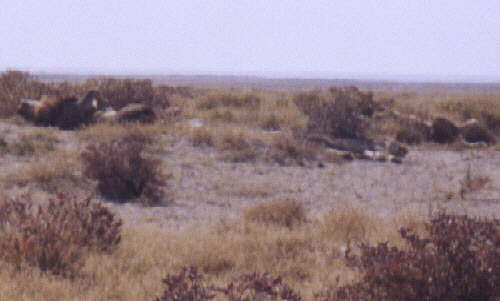
|
|
The huge ears of this little fox detect faint sounds of invertebrates below ground before it unearths them in a burst of frantic digging. The bat-eared fox eats mainly insects, especially termites, but also wild fruit and small vertebrates.
|
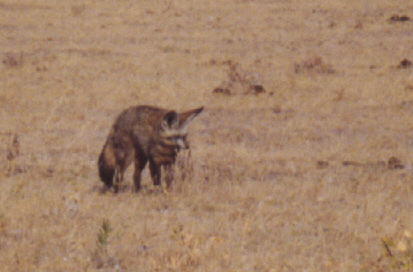
|
|
The greater kudu is Africa's second tallest antelope and the males carry massive spiralling horns much sought after by trophy hunters. Strong jumpers, it readily clears barriers more than 2 meters high.
|

|
|
Skulls (elephant, human, buffalo, sable antelope).
|

|
|
Elephant footprints (it went that way!).
|
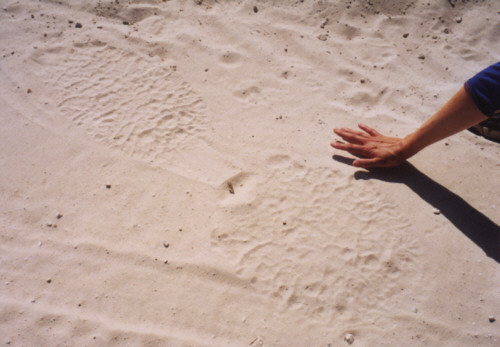
|
|
The red lechwe is found in wetlands and flood-plains. It swims well, and occur in herds of 15 to 20. Males defend territories onto which they herd females.
|
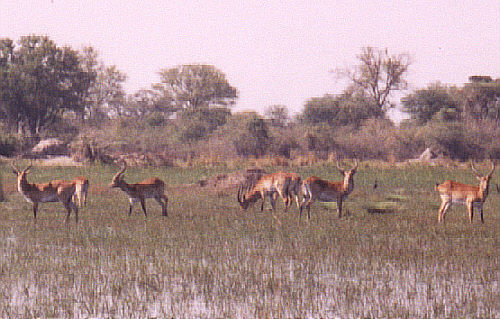
|
|
The remains of a buffalo after a lion's visit.
|
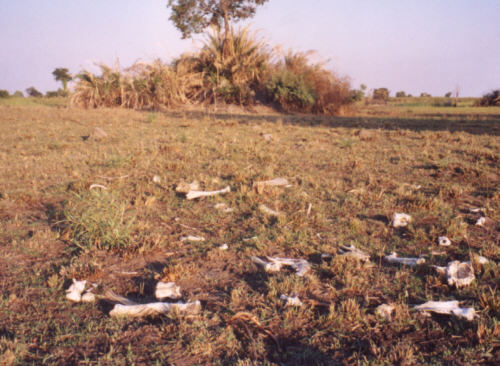
|
|
Elephant dung was a problem on the road, but so full of grass and fiber that it looked almost appetizing.
|

|
|
The warthog is mainly a grazer, with the bulk of its diet being grass. They are found in savannas, woodlands, grasslands and frequently at waterholes where they dig in the marsh and wallow in the mud. When they run (actually trot) their tail is held straight up like an antenna and with the tuft of bristles at the tip of the tail it appears to be waving like a flag, it's hilarious.
|
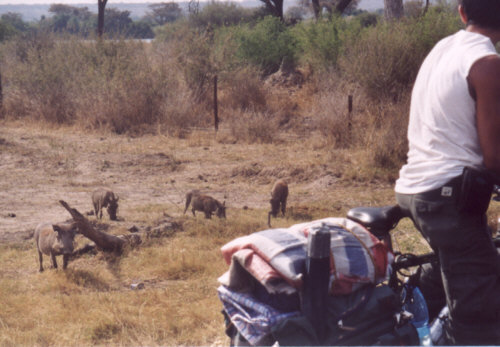
|
|
The most common monkey of the woodland savanna is the vervet monkey. It is diurnal and forages for fruits, seeds, leaves, flowers, invertebrates, and the occasional lizard or nestling. It rapidly learns where easy pickings can be found, around lodges and camp sites, and can become a pest when it is used to being fed.
|
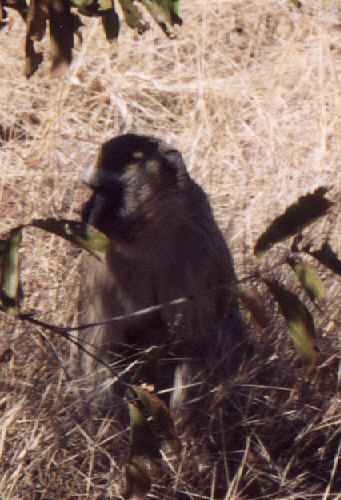
|
|
The doglike snout of the chacma baboon gives it a more aggressive appearance than most primates, which have more humanlike faces. It lives in troops of up to 150 animals, where social interactions are complex.
|

|
|
The Nile crocodiles are still widespread and pose a constant danger to local people living near rivers and lakes.
|

|
|
Handling a River snake.
|
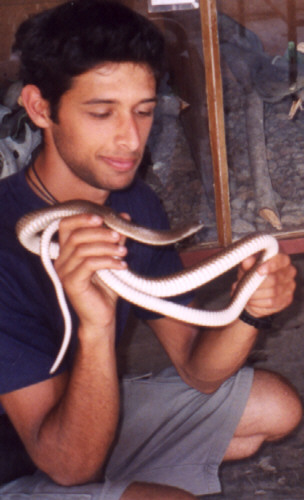
|
|
Celcius the chameleon was hitchhiking and almost got run over when we found him (or her).
|
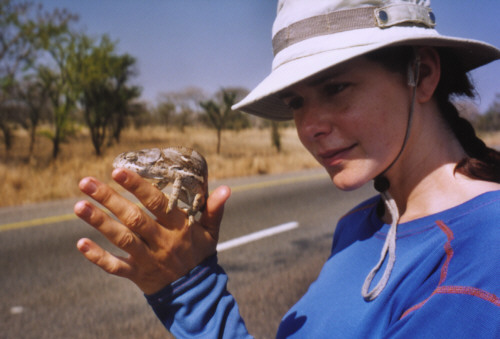
|
|
Our good mosquito-fighting sidekick: The gecko.
|
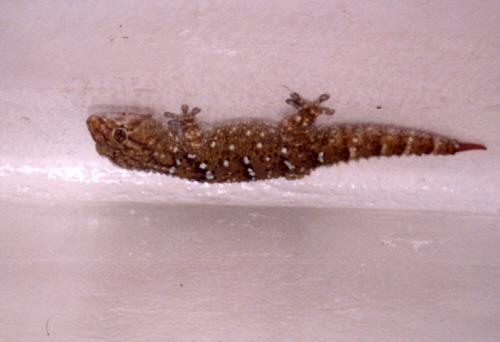
|
|
Brutus, the Rhodesian Ridgeback. The Rhodesian Ridgeback is a native of South Africa. The breed's long history dates back to early in the 16th century when the first European men explored the interior on the Cape of Good Hope and found with the Hottentot tribes a domesticated dog with the hair on his spine being turned forward. This is the condition which we now refer to as the "ridge." The only other known dog which has the peculiarity of such a ridge is found on the island of Phu Quoc in the Gulf of Siam.
|

|
|
The guineafowl is found wild but is also raised around farms as food, and also to control bugs and ticks.
|
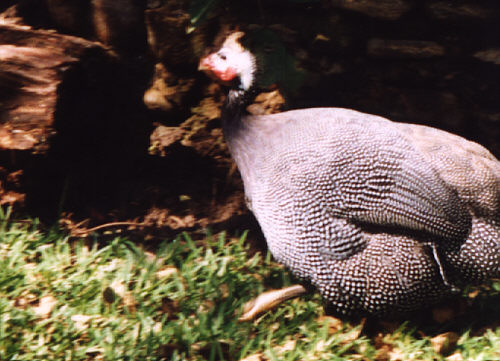
|
|
In flight
|
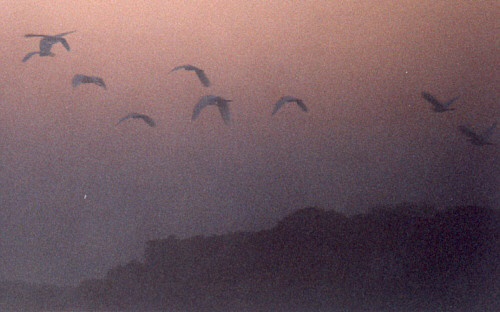
|






















